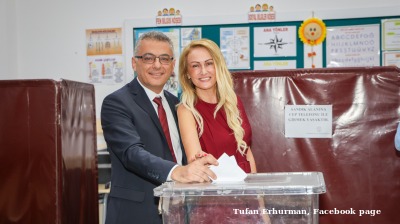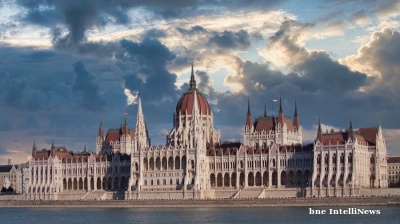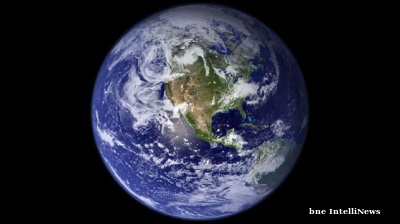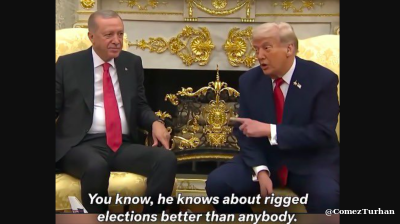Russian recognition of LDNR torpedoes Minsk II, but is probably neither illegal nor a step towards general war

Russia has announced that it will recognise the two breakaway republics of Donetsk and Luhansk as independent states. Though the formalities of recognition remain to be completed, the governments of the two republics immediately requested military assistance from Moscow, which is now being provided, and will shortly apply to join the CSTO Russian-led military alliance.
Within hours, the US, the UK and some EU states announced the imposition of sanctions against Russia, which included Germany’s withdrawal of a key approval for NordStream 2, effectively mothballing the pipeline until further notice. US and UK authorities also publicly characterised the recognition as a breach of international law and an act of aggression against Ukraine.
The mothballing of NS2 is a significant victory for the US, a product of the hysteria that it has orchestrated over the past two months, capturing as it does a large part of the EU’s gas import market for US tight gas exporters. But how long will the furore last?
International Law is often misty. The law of state recognition is a deep fog. A good starting point is the Montevideo Convention of 1933. Here 17 American states (including the USA, with some reservations) set out a treaty to govern the mechanics and law of state recognition. The treaty expressly stated that it codified already-existing customary international law, and although only 19 states ratified it, it is widely accepted today as correctly setting out the law of recognition.
Montevideo’s key article, in relation to the LDNR, is Article 1, which sets the minimum standards a proto-state must reach to be a candidate for recognition. These are: a) a permanent population; b) a defined territory; c) government; and d) capacity to enter into relations with the other states.
Prima facie LDNR passes all four tests. Test (b) (defined territory) is probably the least secure, since LDNR’s authority extends only to the line of contact and not to the full borders of either Donetsk or Luhansk oblasts.
If Moscow stopped at the line of contact it would be entitled to recognise LDNR. Support for that conclusion can be found in treaties and key opinions since 1933. For example, the United Nations Charter itself extends the right to self-determination to all “peoples” (without defining what “peoples” are). LDNR’s case is that ethnic Russians living in Ukraine constitute a “people”, corroborated by the 1994 referendum on the status of the Russian language, which gained 90% support. It is hard to argue against that conclusion.
Further support comes from a direction most unwelcome to the West, namely the published opinions of the EU’s own committee established in August 1991 to adjudicate on the breakup of Yugoslavia, the Badinter Arbitration Committee. Moscow would take the situation of ethnic Serbian minorities swept up into the new states of Croatia and Bosnia as the precedent. On these, Badinter said “[the minorities are] … entitled to all the rights concerned to minorities and ethnic groups.... Republics must afford the members of those minorities and ethnic groups all the human rights and fundamental freedoms recognised in international law, including, where appropriate, the right to choose their nationality".
Badinter went on to opine that inherited frontiers cannot be altered by force, but only by “agreement freely arrived at”. Moscow would probably cite Minsk II as one such agreement, to lay down new regional borders with federal-style autonomy, and would cite Kyiv’s complete failure to comply with Minsk II as justification for recognising the new borders anyway.
Another Badinter statement challenges the possibility of a LDNR recognition with: “The [EU and its members] will not recognise entities which are the result of aggression.” The US/UK/EU consensus is that the LDNR came into force by means of Russian aggression in 2014, and it is beyond argument that Russia provided substantial military aid at the birth of the LDNR. It is probably the case that the aid extended to the use of Russian troops and equipment inside the then territory of Ukraine, including in the shoot-down of MH17.
Moscow would reply that “result” here has a time-limiting element, and that the present existence of LDNR is the result not of violence in 2014 but of the will to independence expressed in the eight years since then. Moscow would also argue that “aggression” here means “an external attack on a state by the people seeking recognition”, and would go on to argue that Russia’s military aid in 2014 was not an attack on Ukraine but aid to a civil war and in defence against ethnic cleansing.
The painful history of Yugoslavia also undermines the “aggression” charge, since the birth of the seven Yugoslavian successor states was accompanied by aggression on all sides, and by aggression from Nato members as well. If the presence of aggression alone nullified recognition then none of the FRY states would today have recognition.
The point is a fine one, fit for the ICJ rather than these pages, but there is sufficient ambiguity to deny the West a simple verdict of “guilty”.
The ICJ has in fact pronounced on the subject of declarations of independence (legal or not) in its judgement on Kosovo’s declaration of independence. In that judgement the court explicitly said: “…In no case, however, does the practice of states as a whole suggest that the act of promulgating the declaration [of independence] was regarded as contrary to international law”.
Returning to Badinter, in its final set of guidelines released in December 1991 it stated that “…[a] state is commonly defined as a community which consists of a territory and a population subject to an organised political authority”. LDNR ticks that box.
However, Moscow has not stopped its recognition at the line of contact, but has included the full territory of the Donetsk and Luhansk oblasts, half of which are under Kyiv’s control. That claim is hard to justify under the law of recognition, and since Moscow will be well aware of the distinction, it signals that Mr Putin’s strategy is to pay less attention to legality than he has been in past, and that there are more chapters of the story yet to play out.
Russia is unlikely to be the only state to recognise LDNR. We may expect Belarus to follow suit, after a pause for the sake of appearances, and it is likely that Kazakhstan, Armenia, Venezuela, Iran, Iraq, Syria and Cuba would chime in at a later date, perhaps along with other members of the CSTO.
One possible candidate for the LDNR recognition club is China. Recognition by Beijing would be a tangible expression of the new strategic partnership growing between Russia and China and a major victory for LDNR, but Beijing will probably see it as an uncomfortable precedent for the recognition of Taiwan by countries supporting Ukraine. China’s foreign ministry spokesman Wang Wenbin gave a press briefing at which he was asked in seven different ways whether China would recognise LDNR. He responded to all questions with a stock answer, that all parties should talk, de-escalate and follow international law.
In opposition to the concept of an LDNR “people” Kyiv can hardly argue that it has treated the LDNR as a part of Ukraine since 2014. After that date the republics operated as proto-states completely independently of Kyiv. No taxes have been paid to Kyiv, no pensions or budget spends have come back. The border has been closed for nearly a decade. Children born in the republics since 2014 have not received Ukrainian birth certificates, and residents of the republics have not taken part in Ukrainian elections. Kyiv’s reaction can be summarised as “a plague on both your houses”, but it underlines the very autonomy that it now attacks.
The law of state recognition endows all existing states independently with the power to recognise new states. To be effective, recognition does not need to be unanimous, or even several. Many post-1945 states remain unrecognised by many established states. Some are recognised by only a handful. For example, Israel today remains unrecognised by more than two dozen states. In essence, while governed at a distance by international law, recognition is accepted by authorities as being more a political act than a legal one, though it endows the recognisee with legal rights, whose extent depends on the extent of recognition.
The recognition of LDNR can be seen through a choice of two lenses. Lens 1, Moscow’s lens, reveals the (ethnic Russian) people of LDNR exercising their natural right of self-determination in 2014, aided by Russia, then agreeing a treaty to formalise their status within Ukraine (Minsk II). Ukraine, realising how much it had given away at Minsk, then took no steps to implement the treaty. Instead, on February 17, it allegedly began an artillery bombardment of LDNR civilians (verified by OSCE observers on the ground and other witnesses reporting live from LDNR), prompting Moscow to recognise LDNR in order to allow LDNR leaders formally to request military assistance. Recognition of a new state is not a breach of international law, unless it is part of an active armed occupation, which is not the case here.
Lens 2 (the West’s lens) shows Moscow promoted the secession of LDNR with armed assistance on the ground in 2014 (in clear breach of international law). Minsk II was an attempt by Kyiv to bring LDNR back to Ukraine under a new autonomy deal, and is still in play. Recognition is in practice so connected to and congruent with past illegal acts (the events form one event together) that it is in effect recognition of a state occupied militarily by the recogniser, and therefore not valid under international law.
It would take an ICJ case and judgement to decide which is true. The mainstream media uses only Lens 2, and it is the picture shown by Lens 2 which is driving sanctions, as well as the forward-basing of penny packets of Nato forces in Eastern Europe, and the general hysteria around the Ukraine crisis narrative.
So much for the law. What does recognition imply for the prospects of a European war?
The first effect to note is that recognition effectively kills Minsk II. With LDNR assuming the status of an independent state, negotiation of a new Ukrainian constitution with federal autonomy on ethnic lines becomes somewhat moot. Quietly, Kyiv will be delighted with that outcome, for Minsk II threatened the fragmentation of Ukraine into ethnic Russian and ethnic Ukrainian pieces, which in turn would have ended up with the Russian parts self-determining themselves into federation with Russia.
The second effect is to add additional energy to the centripetal forces at work between Nato, Europe and the Anglophone countries. I have noted in earlier pieces that the Ukraine crisis has had the effect of refreshing rusty Nato political and command structures, an unwelcome but acceptable cost for Moscow. Recognition of LDNR has now brought the Anglophones and EU members even closer together.
That outcome is highly unwelcome in Moscow, and Mr Putin seems more likely to be looking to de-escalate now than to increase pressure. De-escalation in practice means a reduction in the excess troop formations stationed around (but not on) Ukraine’s eastern borders. Another fact encouraging de-escalation is that, with Russian forces stationed inside LDNR, Moscow no longer needs to check Kyiv’s desire to recapture LDNR with the threat of an attack from the north.
The near hysterical Nato/EU narrative has read recognition as another step towards a ground invasion of Ukraine. However, the powerful reasons that have prevented an invasion so far remain in force, and indeed one powerful reason to invade – the protection of ethnic Russians in LDNR – has now been removed. An invasion of Ukraine remains as unlikely as it has proved to be for the past month.
This does not apply to the prospects for an invasion of the rest of Luhansk and Donetsk. That probability must now be seen as considerably higher, though not cost-free, since some 60,000 Ukrainian soldiers stand between LDNR and its recognised territory. Moscow may be hoping that Kyiv will be stupid enough to initiate the war with an attack on LDNR in the near term (and Kyiv is just about unwise enough to make that large mistake).
One of Moscow’s core aims – to prove to Kyiv and Ukrainians generally that Nato and the EU will not send troops to fight Russians in Ukraine – has been reinforced, with uniform Nato/EU statements that no forces will be sent even now that a part of Ukraine has been “invaded” (in Western language).
So, what is Moscow’s strategy now? The end-game remains the same: the return of Ukraine, or at least most of it, to some form of political federation with, or within, Russia. Where before I believed that Moscow desired to recover Ukraine whole and intact, including its near-fascist western extremists, it now seems more likely that the objective is smaller: Trans-Dnepr Ukraine, Black Sea Ukraine, parts of the right bank of the Dnepr and Kyiv, with a new border established somewhere midway between Kiev (as it would become) and Lviv.
Invasion is expensive and risky (to Putin personally), as well as outright illegal. Washington has so inflamed the Western media and a gullible British government that invasion now might easily precipitate a major reaction against Russia from Nato with unpredictable but certainly painful consequences. Wars are easy to start but hard to finish.
Patience, on the other hand, is cheap, riskless and fully compliant with international law: while Moscow works to make LDNR a happy prosperous and safe place, it can use use its command of Ukrainian gas and oil supplies and Ukraine’s own many weaknesses to make Ukraine poor, cold and miserable. Misery will gradually recruit supporters either for federation with Russia or for a final fragmentation into Russian and Ukrainian oblasts, with the former moving into Moscow’s control one way or another.
Moscow can rely on Kyiv’s own poor judgement to add to the required quantity of misery. As an example of that judgement, Mr Zelenskiy threatened at the Munich Security Conference to acquire nuclear weapons if Europe failed to guarantee its security under the 1994 Budapest Agreement. With that level of political smarts, European leaders may actually be quietly relieved to see Ukraine dissolve into an enlarged Russian federation.
Gav Don trained as an officer in the Royal Navy and has a degree in international law. He grew a global energy intelligence business over 25 years and now specialises in geopolitical analysis, focusing on the interactions between politics, law, energy and armed force.
Opinion

Don’t be fooled, Northern Cyprus’ new president is no opponent of Erdogan, says academic
Turkey’s powers-that-be said to have anticipated that Tufan Erhurman will pose no major threat.

COMMENT: Hungary’s investment slump shows signs of bottoming, but EU tensions still cast a long shadow
Hungary’s economy has fallen behind its Central European peers in recent years, and the root of this underperformance lies in a sharp and protracted collapse in investment. But a possible change of government next year could change things.

IMF: Global economic outlook shows modest change amid policy shifts and complex forces
Dialing down uncertainty, reducing vulnerabilities, and investing in innovation can help deliver durable economic gains.

COMMENT: China’s new export controls are narrower than first appears
A closer inspection suggests that the scope of China’s new controls on rare earths is narrower than many had initially feared. But they still give officials plenty of leverage over global supply chains, according to Capital Economics.



